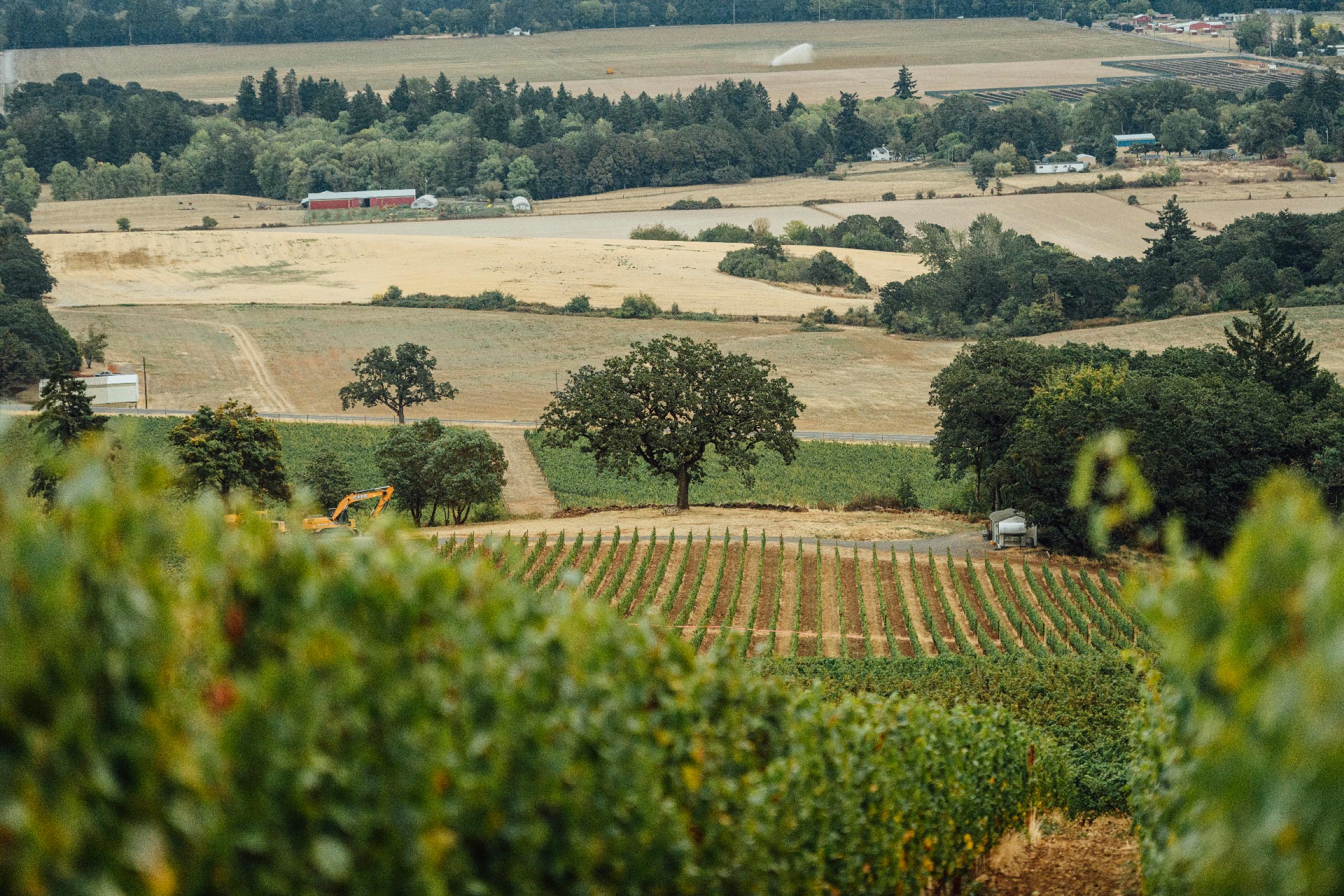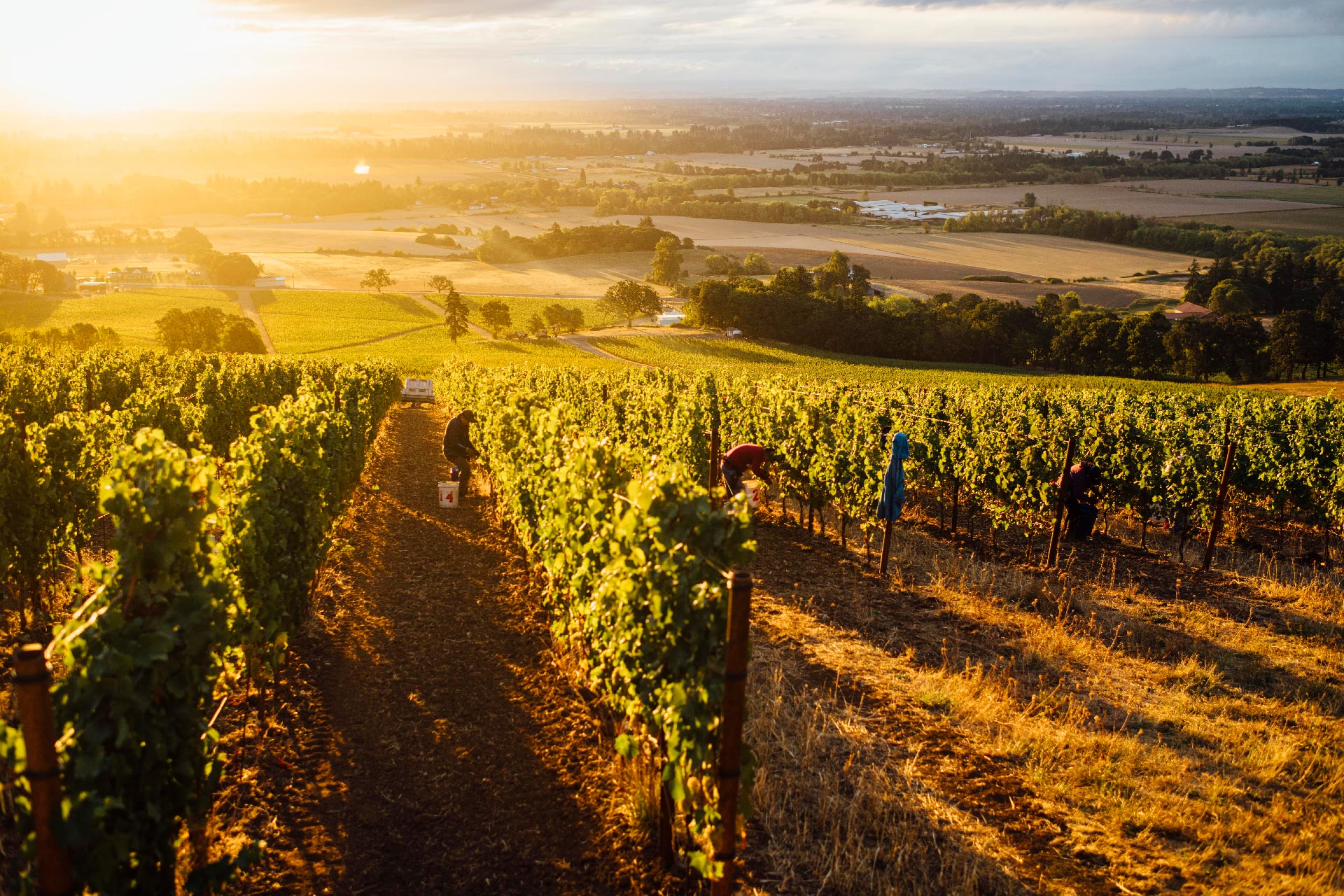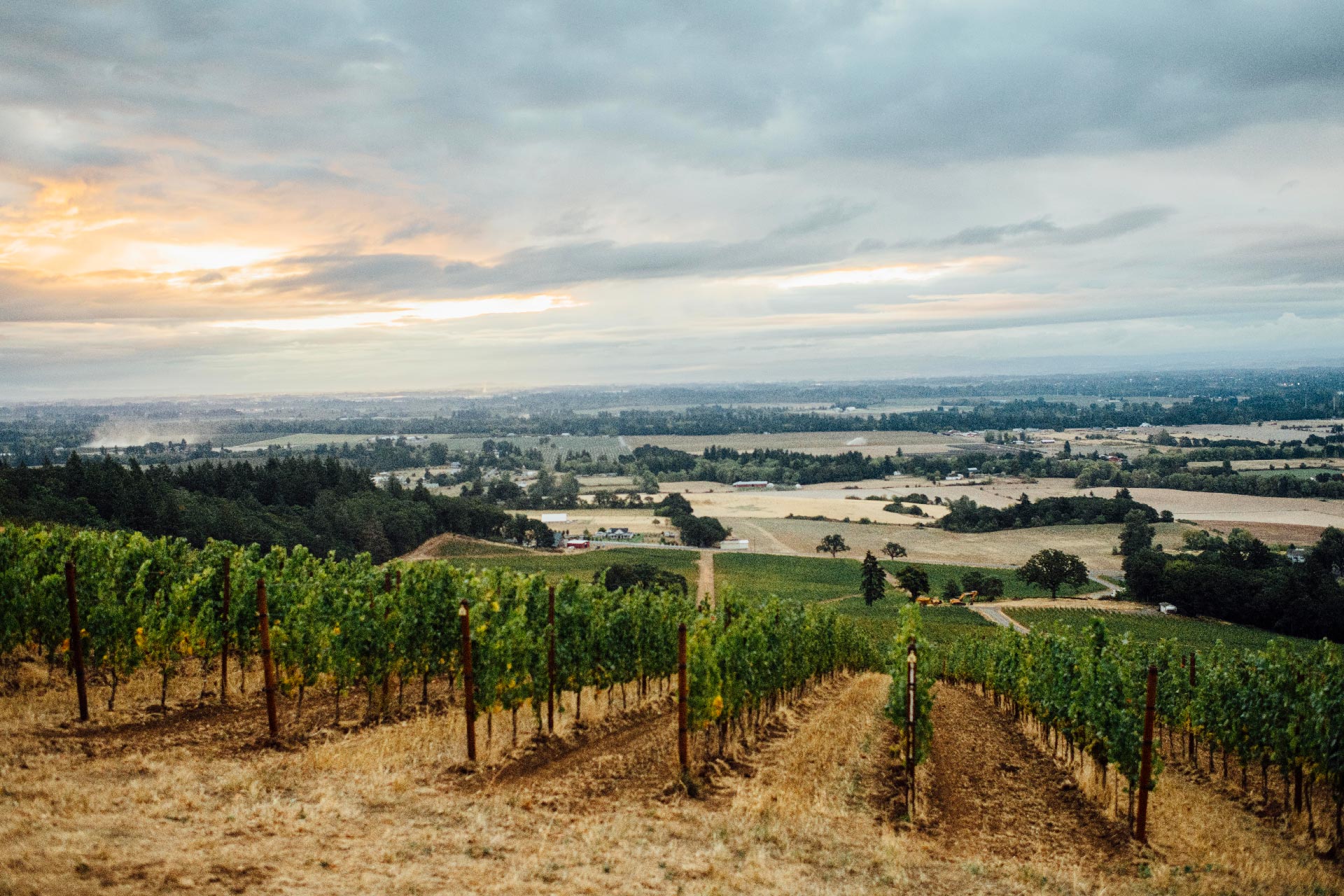The Land + The Vine
The beautiful 105-acre domain of Witness Tree Vineyard sits amidst a family of pedigreed vineyards in the Eola-Amity AVA, including Cristom, Spirit Hill, and Temperance Hill Vineyards.
Like many prime grape-growing regions around the world, Witness Tree Vineyard sits on a slope, facing southeast for ample sun throughout the day, especially in the morning.
Every planted row is optimally angled to either maximize or mitigate the more intense, sunny exposure to the south.
Going up the hill, the vineyard is classified into three distinct sections; each at a different elevation, with a unique soil profile, and producing three distinct quality categories of grapes:

The lower section
(28.95 acres/18 blocks) consists of 15,000 year-old alluvial soils.
This fertile soil, derived from ancient river silt and sedimentary deposits, drains well; this elevates grape concentration and aromatics, even at the relatively lower altitude at the bottom of the hill.
The middle section
(16.94 acres/9 blocks) consists largely of Willakenzie soils.
Willakenzie is a marine sedimentary soil, and is drier, sandier, and more well-draining than any other type in the vineyard. Because it does not retain as much moisture as the lower or upper block soils, the vines here root to greater depths. This can lend more structure and boldness in the grapes, since the vines must work for moisture and will naturally be more low-yielding.


The upper section
(10.61 acres/16 blocks) sits at over 600 feet elevation and is composed of the ‘famous red clay’ of the Willamette Valley, consisting of ancient Nekia and Jory, basalt-based soils derived from ancient lava flows.
Jory contributes the classic red hue of the Willamette clay, being high in iron. Its clay content aids in water retention. Paired with Nekia, which is also volcanic but more quickly-draining, the vines are able to find a balance between too wet or dry, too fertile or infertile conditions. Coupled with the higher elevation and ample sun, many blocks in this section are otherworldly in their profile of expression.
Extremely granular analysis of the soil was done after the vineyard’s original planting, from 1982, was mostly destroyed from a phylloxera outbreak in 2016.
In 2017, geologist Pedro Parra and the farming team led by vineyard manager and world-renowned viticulturist Ryan Hannaford, completed comprehensive terroir and soil analysis. This maximized soil fertility for each varietal, clone type, and planting method, in preparation for a 2019 replanting.
The team’s process of soil analysis was strategic and meticulous:

Electromagnetic depth assessment
for optimal dig sites.

Extraction of 37 soil samples at points of optimal composition in the vineyard.

Identification of 9 major ‘terroir units’ (soil base types) with specific fertility and drainage characteristics.
The Vine
After the analysis, the team crafted a custom vineyard design, block by block.
The team proposed 22 different blocks – each tailored with specific clone variations of Pinot Noir or Chardonnay to optimally grow in and express the soil type.
Two types of spacing were also employed in the blocks, depending on the elevation and soil type:

7’ (row width) x 4’ (between vines) spacing was used for blocks with deeper soils, and a deeper-rooting rootstock to match

6’ x’ 3’ spacing was structured for more shallow soils, along with a rootstock that could accommodate less soil depth
The replanting was successfully completed in 2019, and all rootstock in the vineyard is now phylloxera-resistant.
53.35 acres of the property are currently fully planted and producing, composed of Pinot Noir, Chardonnay, and a single, choice block of Aligote:

44.61 acres of producing Pinot Noir
Clones 113, 114, 115, 125, 667, 777, Pommard, and Wadensville.
An additional 0.51 acres were newly planted in 2021.

8.74 acres of producing Chardonnay
Clones 76, 87, 95, 96, and 548.
An additional 1.45 acres were newly planted in 2021.
1.69 acres were also newly planted in 2022.

1.49 acres of Aligote
(The “Hundred Suns” clone) was planted in 2021, following the trending increased interest of this grape among winemakers as both a unique blending component and a single-varietal wine.
Future expansions are also fermenting – there are 10 acres of open, plantable land ideal for Chardonnay expansion (5 acres are being planted Fall 2023) and 6 acres of timber land that could be expanded into.
All available land, if fully planted, would encompass approximately 75 acres of producing vines.
With the newly-planted vineyard’s inaugural harvest in 2021, and a promising 2023 under our belt, we look to have all planted blocks producing at full capacity for a beautiful, terroir-driven 2024 vintage.

